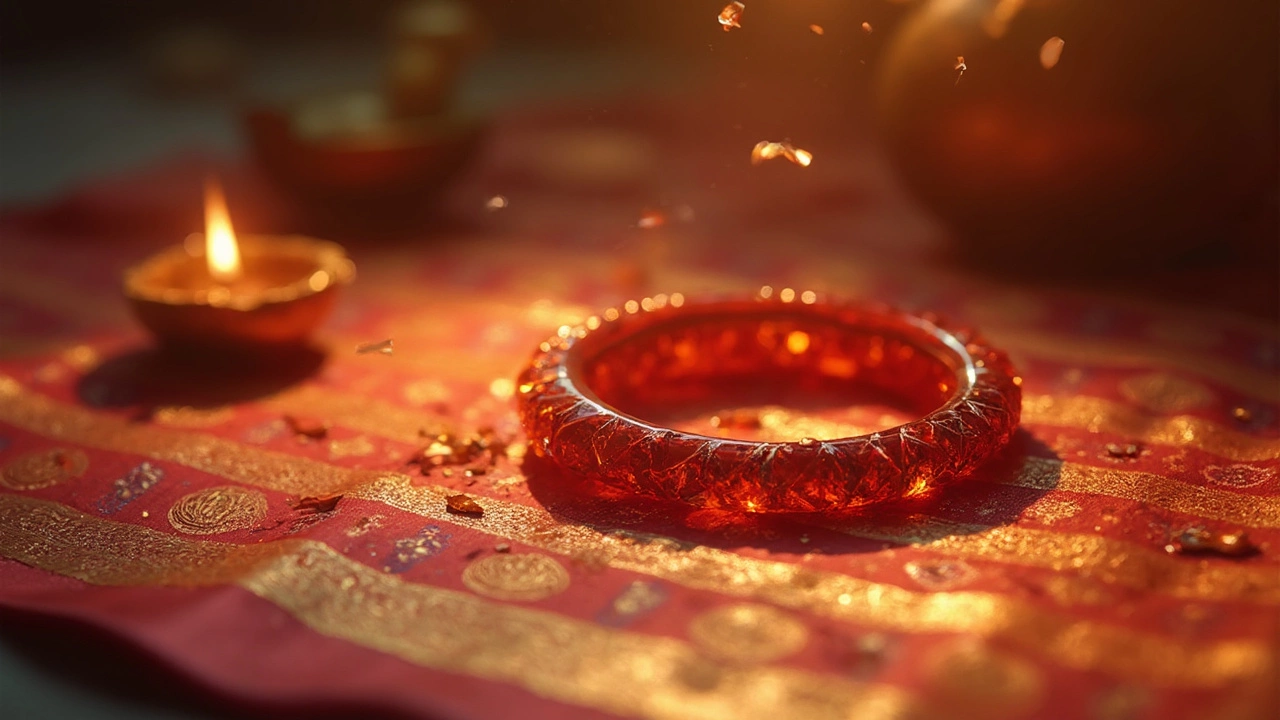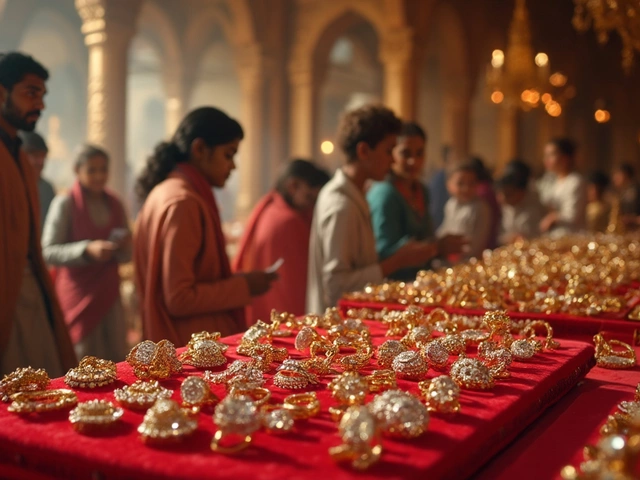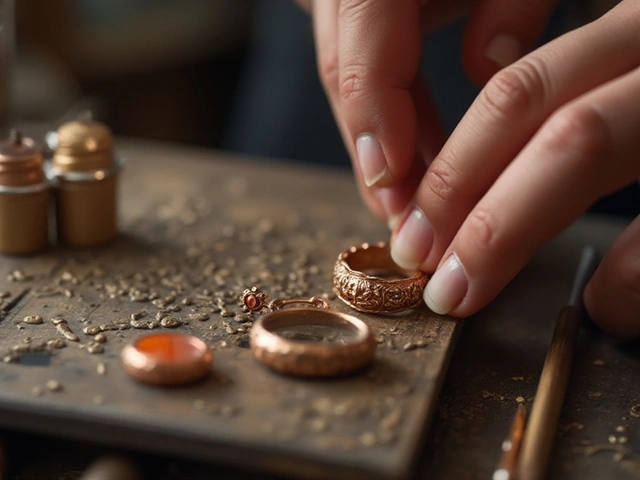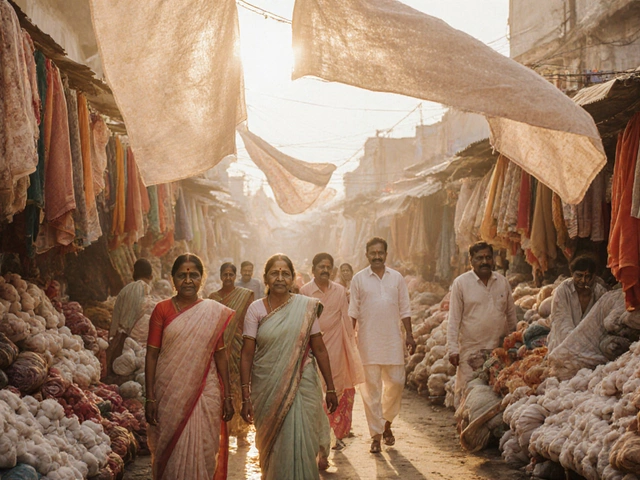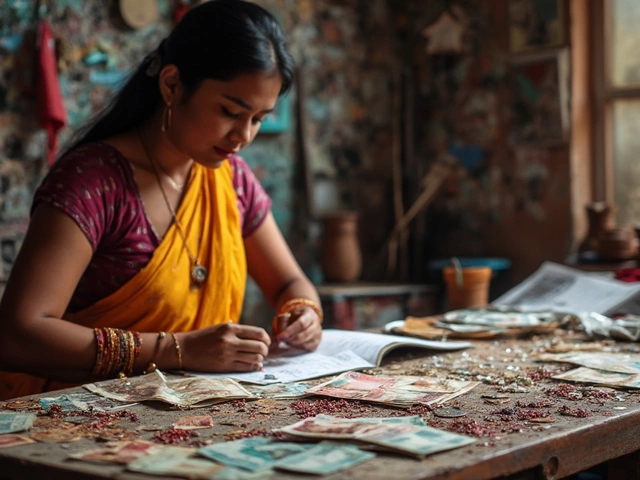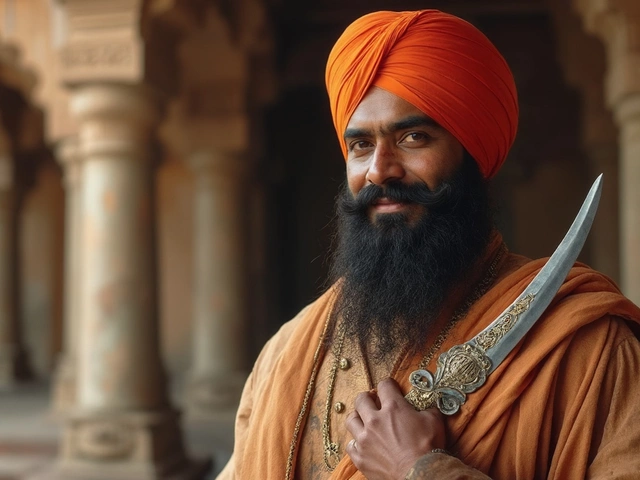Hindu Cultural Beliefs: Traditions, Symbols & Everyday Practices
When talking about Hindu cultural beliefs, the body of traditions, symbols, and rituals that guide daily life and celebrations in Hindu communities. Also known as Hindu traditions, it influences choices in clothing, jewelry, and ceremony. These beliefs are not just old stories; they shape the way people dress for festivals, pick accessories for weddings, and even decide how to arrange a home altar. Below we break down the most common symbols you’ll meet when exploring Indian culture.
Key Elements of Hindu Beliefs in Jewelry
One of the most recognizable symbols is the Mangalsutra, a sacred necklace that marks a woman's marital status and invokes blessings for a long, harmonious marriage. The mangalsutra’s gold chain and often a black-beaded pendant embody two core attributes: marital commitment (the binding) and protection (the black bead’s mythic power). This piece links the individual to the larger family network, a direct expression of the belief that marriage unites not just two people but two families.
Another staple is the Nose stud, a small ornamental piece traditionally placed on the left nostril of married or betrothed women. The location isn’t random; it aligns with the ‘Nadi’ point that, according to Ayurveda, can ease childbirth and enhance fertility. This practice reveals how Hindu cultural beliefs blend spiritual symbolism with practical health ideas, turning a simple accessory into a ritual of protection and prosperity.
The color black also carries weight, especially in Black bangles, worn to ward off the evil eye and promote marital harmony. While bright reds and golds celebrate joy, black is a defensive hue, believed to absorb negative energy. The same protective logic appears in the black beads of many mangalsutras, showing a consistent theme: dark pigments serve as spiritual shields in Hindu cultural beliefs.
Even everyday actions can become symbolic. Take the act of breaking glass, a ritual sometimes performed during weddings to signify the shattering of past obstacles and the entry into a new joint life. Though it might look like a mere superstition, this practice reflects a deeper belief in transformation—destroying the old to make way for fresh blessings. It’s a vivid illustration of how material objects and simple gestures are woven into the fabric of Hindu tradition.
All these elements—mangalsutra, nose studs, black bangles, and breaking glass—illustrate a network of beliefs where symbols, materials, and actions reinforce each other. Hindu cultural beliefs thus create a living tapestry: each piece of jewelry or ritual gesture tells a story about identity, protection, and community. As you scroll down, you’ll find articles that dig deeper into each of these symbols, practical tips for choosing the right pieces, and the cultural history behind them.
Ready to explore how these traditions shape everyday style and special occasions? The collection below unpacks the meaning, modern twists, and buying advice for each of these iconic symbols, helping you honor tradition while staying stylish.
A Broken Bangle: Navigating Its Cultural Significance in Hinduism
In Hinduism, bangles aren't just ornamental—they're deeply tied to tradition and cultural beliefs. When a bangle breaks accidentally, it carries a mix of cultural, emotional, and sometimes superstitious significance. This article explores what a broken bangle might symbolize, the beliefs growing around it, and how different families react to such occurrences. Uncover practical tips for dealing with broken bangles, especially within a religious context, blending respect for tradition with modern perspectives.
